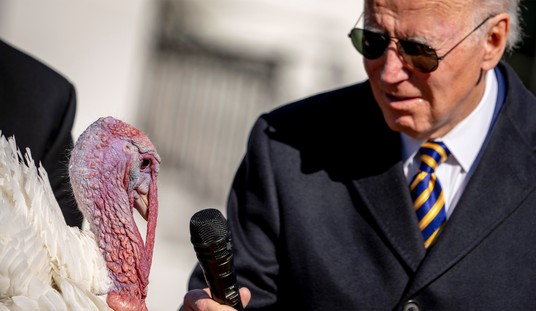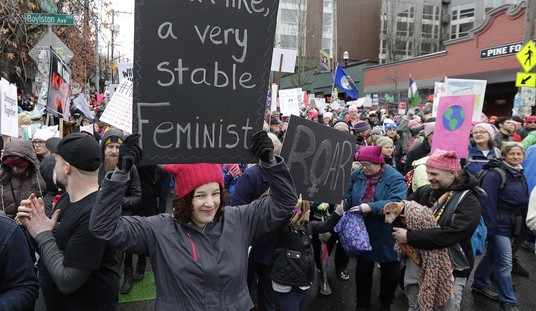A new report from the Special Inspector General for Afghanistan Reconstruction (SIGAR) reveals that the Defense Department spent $43 million on a gas station that should have cost about half a million dollars.
The report studies the Department of Defense’s Task Force for Stability and Business Operations (TFBSO) project to build a compressed natural gas automobile filling station in the country.
But SIGAR didn’t have an easy time compiling the report, stressing that the review ended up being “hindered” by the “lack of cooperation” at the Pentagon.
And while the inspector general’s office said there were problems trying to get the full story of the fill-up station, they never did get an answer about why the project cost so much.
SIGAR submitted its findings to Defense Secretary Ashton Carter on Oct. 22, and released the report to the public just after midnight today.
The purpose of the filling station project was to “demonstrate the commercial viability” of cars fueled by natural gas in a country with ample gas reserves. It was supposed to encourage domestic energy production and curb Afghanistan’s heavy reliance on energy imports.
Inspector General John Sopko acknowledged to Carter that the mission of building the station was accomplished, but “at an exorbitant cost to U.S. taxpayers” — and “there is no indication that TFBSO considered the feasibility of achieving the station’s broader objectives or considered any of the potentially considerable obstacles to the
project’s success before beginning construction.”
The comparison price of $500,000 came from a natural gas station built in neighboring Pakistan.
“One of the most troubling aspects of this project is that the Department of Defense claims that it is unable to provide an explanation for the high cost of the project or to answer any other questions concerning its planning, implementation, or outcome,” Sopko wrote. The TFBSO closed in March, and in June, Sopko said, SIGAR was told that the DoD didn’t have anyone around to “properly” answer the inspector general’s questions.
“Frankly, I find it both shocking and incredible that DOD asserts that it no longer has any knowledge about TFBSO, an $800 million program that reported directly to the Office of the Secretary of Defense and only shut down a little over six months ago,” Sopko wrote in the letter to Carter. “Nevertheless, I intend to continue our inquiry into TFBSO activities to shed additional light on how this program operated, what it achieved, how this enormous amount of money was spent, and whether any conduct by TFBSO staff or contractors was criminal in nature.”
The task force spent $766 million of the $822 million allocated by Congress from 2010 to 2014.
The $43 million station, pictured above, was built near Sheberghan, a northern city not far from the Turkmenistan border and in the region of Afghanistan’s gas fields. The city is west of Mazar-e-Sharif, where the DoD task force hoped to expand the natural-gas fervor.
The station isn’t even the size of a truck stop: two pumps, a trailer-filling area and a car conversion center. However, it costs about $700 to covert a car to natural gas in Afghanistan — where the average annual income is $690 a year.
SIGAR cites not only the comparative project in Pakistan, but found a 2010 publication of the International Energy Association that states “the range of
investment for a public [CNG] station serving an economically feasible amount of vehicles varies from $200,000 to $500,000.”
However, the report notes, “If TFBSO had conducted a feasibility study of the project, the Task Force might have noted that Afghanistan lacks the natural gas transmission and local distribution infrastructure necessary to support a viable market for CNG vehicles.” Afghanistan has one operational natural gas pipeline. Building a pipeline from Sheberghan to Kabul would cost $940 million, according to a March USAID report.
“Even if Mazar-e-Sharif were to obtain a reliable supply of natural gas, there is no way to deliver it to small consumers, such as filling stations. Mazar-e-Sharif’s local distribution network is currently defunct and a USAID study estimates that it would cost $50 million to rehabilitate it,” the SIGAR report states. “…In sum, it is not clear why TFBSO believed the CNG filling station project should be undertaken.”
Investigators found that overhead accounted for $30 million of the gas station’s costs.
The fact that the Pentagon “contended that no one remains at the Department who
can answer substantive questions,” the report says, “implies that TFBSO operated independent of any internal DOD management and oversight.”
“Yet TFBSO was created by the Deputy Secretary of Defense and throughout its existence reported directly to the Office of the Secretary. Moreover, it was dissolved only a little over six months ago. In fact, for the last seven months of its existence, TFBSO reported to the Principal Deputy Under Secretary for Policy, who now says that no one in the Office of the Secretary knows anything about it.”
The report adds that the Defense Department’s “position that it has no knowledge about this $800 million program is startling and unconvincing.”
Principal Deputy Under Secretary of Defense Brian P. McKeon reviewed a draft of the report and, in a written response to Sopko in early October, reiterated why the Defense Department couldn’t answer questions without disputing findings of the inspector general.
“We stand ready to facilitate SIGAR’s access to TFBSO records and to assist your office in locating former TFBSO employees, including former TFBSO employees now working in the Department, who may be able to provide background on this project,” McKeon wrote.










Join the conversation as a VIP Member